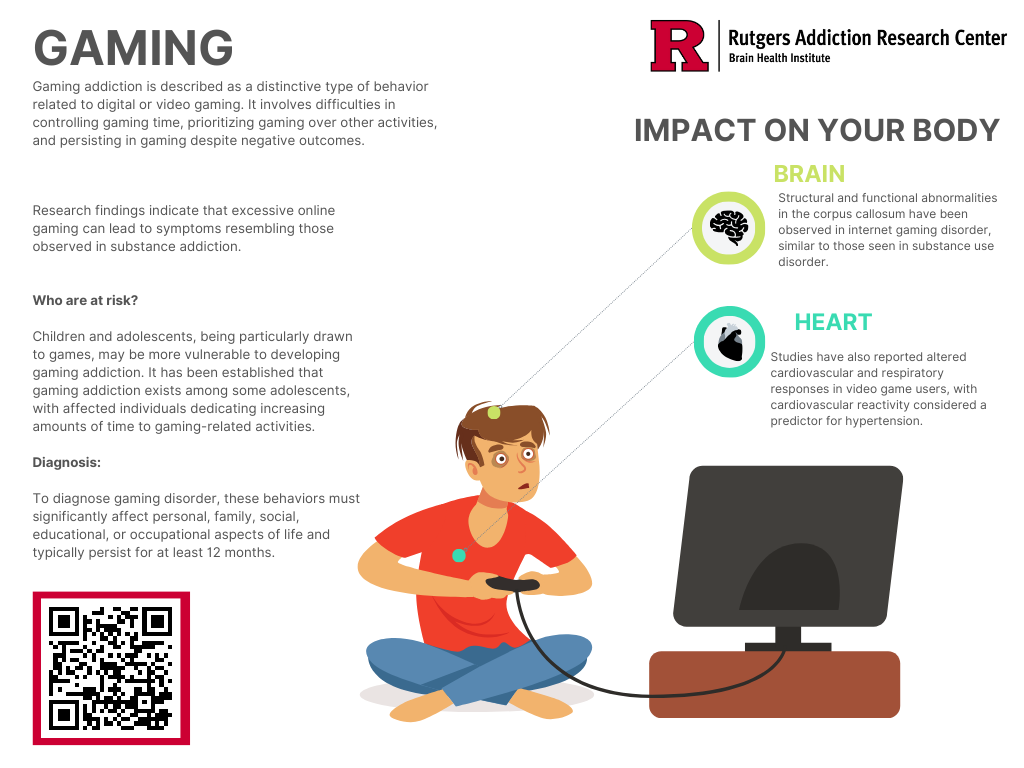Gaming addiction—recognized by the World Health Organization as “Gaming Disorder” and addressed as Internet Gaming Disorder (IGD) in the DSM-5—has emerged as a growing concern in the United States. Prevalence estimates range from 1.7% to 10%, particularly affecting adolescents and young adults. With rising treatment demands, academic disruptions, and emotional consequences, this is more than a passing worry—it’s a societal issue demanding urgent attention.
Introduction: From Hobby to Habit to Health Concern
Once a leisure activity enjoyed in moderation, gaming in the U.S. has evolved into an immersive, always-on digital lifestyle. High-definition graphics, real-time multiplayer modes, competitive esports, and constant content updates keep players hooked for hours. For many, it’s harmless fun. But for a growing subset, gaming becomes compulsive—impacting school, work, relationships, and mental health.
So, is gaming addiction in America truly an epidemic? Let’s unpack the data, explore the human stories behind the statistics, and address the most pressing questions people are asking.
What Is Gaming Addiction—And How Is It Classified?
The World Health Organization (WHO) officially recognized Gaming Disorder in the ICD-11 (International Classification of Diseases, 11th Revision). According to WHO, Gaming Disorder is characterized by:
- Impaired control over gaming (frequency, intensity, duration).
- Prioritizing gaming over other activities.
- Continuing or escalating gaming despite negative consequences.
In the American Psychiatric Association’s DSM-5, “Internet Gaming Disorder” is not yet a fully accepted diagnosis, but it’s listed under “Conditions for Further Study.” This means researchers acknowledge its potential seriousness but are still refining diagnostic criteria.
How Common Is Gaming Addiction in the USA?
Prevalence figures vary due to differences in definitions and measurement methods:
- Estimates range from 1.7% to 10% of the U.S. population.
- Among gamers specifically, around 8.5% show signs of addiction.
- Adolescents aged 12–17 show problematic gaming behaviors at rates near 8%.
In sheer numbers, even a conservative estimate means millions of Americans may be experiencing symptoms consistent with gaming addiction.
Who Is Most at Risk?
Gender
Studies indicate males account for 75%–90% of identified gaming addiction cases. While female gamers are on the rise, the imbalance remains stark.
Age
Young adults between 18 and 34 are particularly vulnerable, with the average age of treatment seekers being 24.
Demographics
Gamers in the U.S. are predominantly Caucasian (67%), followed by Hispanic (15%), African American (12%), and Asian (5%). However, detailed addiction-by-ethnicity data is limited.
Real-Life Cases That Show the Problem’s Scope
- The Teen Lawsuit: A 14-year-old’s family filed a lawsuit against major game companies, alleging their child became addicted. The case was dismissed because in-game data didn’t match claimed usage—highlighting the difficulty of proving addiction legally.
- The VR Controversy: A small developer was sued when a parent claimed their child developed a VR gaming addiction. The developer denied using manipulative design tactics, sparking industry debate.
- Therapy and Recovery: In a GQ-featured story, “Callum” entered a specialized rehab program after gaming 16 hours a day. The consequences included academic failure, social withdrawal, and deteriorating health.
Health, Social, and Academic Impacts
Physical Health Issues
- Sleep deprivation and disrupted circadian rhythms.
- Eye strain and repetitive stress injuries.
- Poor posture and related musculoskeletal problems.
Mental Health Concerns
- Higher rates of depression and anxiety.
- Irritability and mood swings when not gaming.
- In severe cases, dissociation from real-world responsibilities.
Academic & Career Impacts
- 70% of youth with addiction symptoms report academic decline.
- Missed deadlines and absenteeism are common in both school and workplace contexts.
Family and Relationship Strain
- Conflicts over screen time.
- Withdrawal from family events and social obligations.
Is Gaming Addiction Truly an Epidemic in America?
While “epidemic” often refers to contagious diseases, behavioral health experts use the term more loosely for widespread social problems. By that measure, gaming addiction shows epidemic-like characteristics:
- Rapidly increasing prevalence.
- Significant social and economic costs.
- Growing recognition from health organizations, parents, educators, and lawmakers.

FAQs: Answering America’s Most Searched Questions on Gaming Addiction
- What is gaming addiction?
A behavioral condition marked by compulsive gaming, leading to significant impairment in daily life. - How many Americans are affected?
Between 1.7% and 10% of the population—millions of people. - Who is most at risk?
Young males aged 18–34, with adolescents also heavily impacted. - Is it officially recognized?
WHO lists Gaming Disorder in ICD-11; DSM-5 includes IGD in “Conditions for Further Study.” - Can gaming addiction cause health issues?
Yes—both physical (sleep loss, eye strain) and mental (depression, anxiety). - Are lawsuits related to gaming addiction happening?
Yes—though proving addiction legally remains challenging. - How do I know if I’m addicted?
If gaming consistently interferes with school, work, relationships, or health. - Can it be treated?
Yes—through therapy, structured rehab, and support groups. - What can parents do?
Set boundaries, monitor playtime, encourage other hobbies, and seek professional help when needed. - Are there benefits to gaming?
In moderation, gaming can improve problem-solving, teamwork, and stress relief—balance is key.
Practical Advice and Solutions
If You Suspect Addiction:
- Track hours spent gaming.
- Monitor mood changes and social withdrawal.
- Consult a therapist experienced in behavioral addictions.
For Families:
- Establish tech-free times and zones at home.
- Encourage physical activities and offline hobbies.
- Keep communication open and judgment-free.
For Schools and Policymakers:
- Integrate digital wellness education into curricula.
- Fund research into prevention and treatment strategies.
- Promote healthy esports participation with limits.
Final Thoughts
Gaming addiction in the U.S. is more than just a media scare—it’s a documented behavioral health challenge with tangible consequences. Whether we label it an “epidemic” or not, the numbers, personal stories, and rising demand for treatment point to a growing crisis. Addressing it requires a balanced approach: acknowledging the benefits of gaming while putting safeguards in place to prevent harm.
By fostering awareness, providing resources, and promoting healthier digital habits, we can ensure gaming remains a source of joy and connection—not a pathway to isolation and decline.
